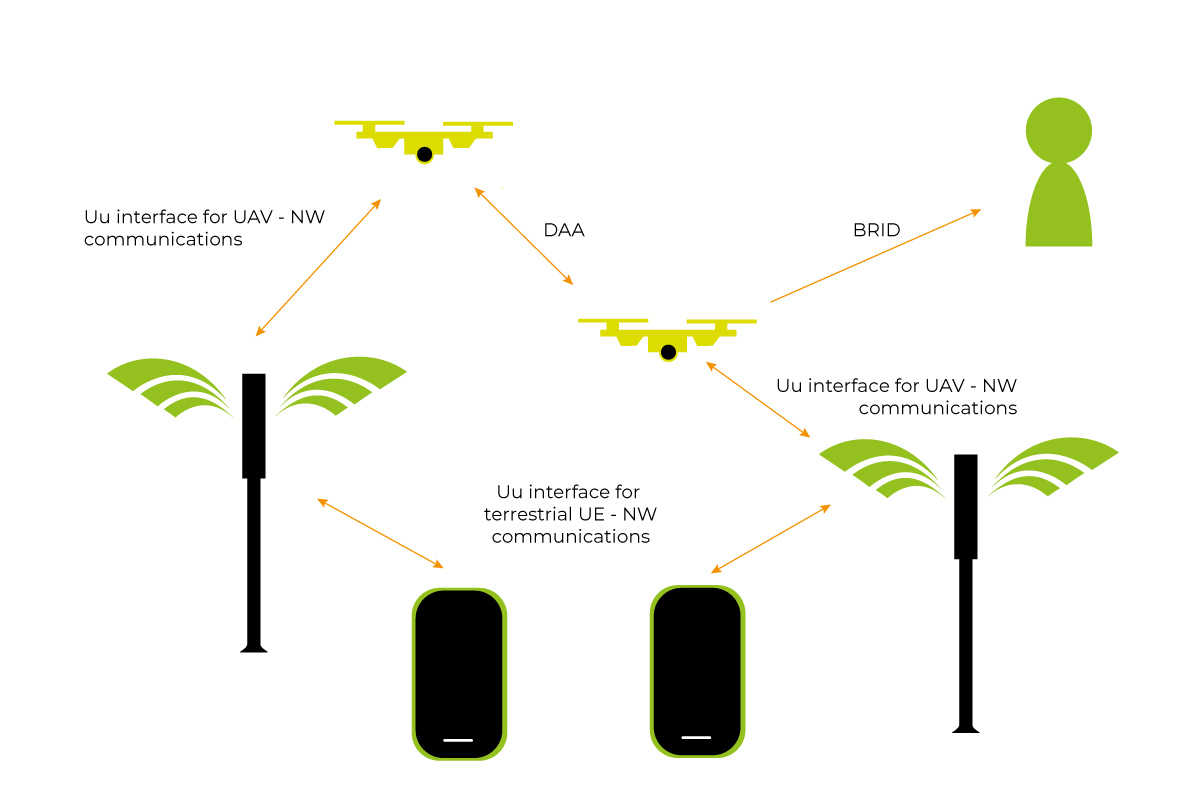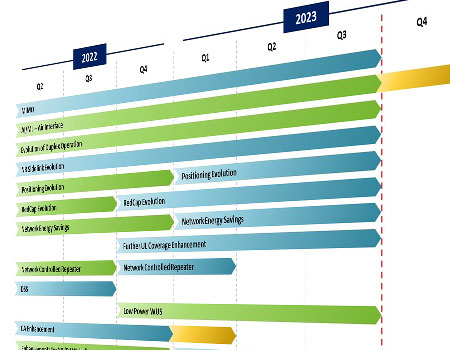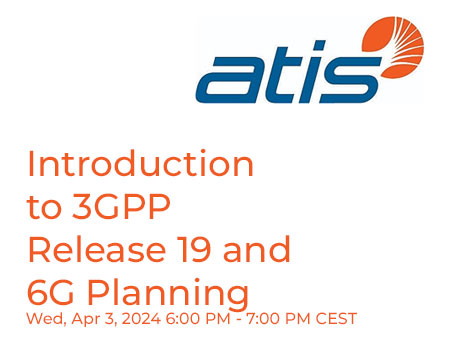By Jedrzej Stanczak, WI Rapporteur, Nokia
First published May. 2023, in Highlights Issue 06
Recent technological advances have led to a continuous increase in the number of use cases where the application of Uncrewed Aerial Vehicles (UAVs) – also known as drones - can maximize time and cost efficiency, including; emergency services, security services, goods transportation or air quality monitoring. To ensure the smooth and safe integration of UAVs onto the airspace, a reliable communication between the UAV and its controlling unit or the application server is essential. The ubiquity of cellular networks and their infrastructure make them a perfect candidate to provide such continuous connectivity.
The first efforts to connect UAVs via 3GPP networks were made in Release 15 of LTE, when a study to identify potential enhancements for aerial UEs was conducted; several of which were subsequently specified during the work item (WI) phase, completed in 2018. With the arrival of Release 18 UAVs are set to fly into the 5G-Advanced technology.
Before the work in RAN Working Groups (WG) began, 3GPP SA WG2 had already started work aimed at using cellular technology for supporting the Uncrewed Aerial Systems (UAS). The work there was mostly focused on identification, authentication and authorization of Aerial UEs. The Rel-18 WG RAN2-led work is focused on radio measurements, mobility and interference mitigation enhancements that should allow smooth integration of UAVs within the existing NR networks.
As the UAV UE is likely to fly above the rooftops, where Line of Sight (LOS) conditions dominate, it may detect multiple strong neighbour cells and face an increase in interference conditions. Because of that, the NR measurement framework will support height-dependent measurement report triggering (i.e. Events H1 and H2, to be specified in TS 38.331) which will help the network in identifying at what altitude the UAV currently operates. When the network has such knowledge, it may adapt the UAV UE configurations, ensuring the interference level is kept at minimum.
To avoid continuous measurement reporting, the network will be able to instruct the UAV to send the report only if more than a configurable number of cells (i.e. larger than one) simultaneously meet the reporting criteria (so-called: multi-cell report triggering). Another technique considered in RAN2 is to allow the UAV UE to use height-specific configurations, e.g. different set of parameters for the altitudes below and above the rooftops.
Flight path reporting is another UAV-specific procedure that is expected to help the gNB in radio resource planning. As the name implies, the UE may be asked by the network to provide its expected aerial route, comprising a set of geolocation points and associated timestamps. Using such information, the network can estimate what is the probable sequence of visited cells and approximately when the drone will appear in their coverage. The UAV UE will also be allowed to inform the network once there are any significant modifications to the previously reported flight path plan, so that the network stays up-to-date and can reassign resources accordingly.
The UAV-related optimizations are not only pursued in WG RAN2, other 3GPP WGs are also actively involved. RAN1’s role in Rel-18 is to investigate how to support the Frequency Range 1 (FR1) beamforming for UAV’s UL transmissions. Beamforming may be especially helpful in the higher end of FR1 spectrum and shall lead to reduced interference caused by NR-capable aerial UEs. WG RAN3 has been assigned the task of defining the subscription-based UAV UE identification which shall ensure only the drones with proper 3GPP-compliant subscription will be served by 5G-Advanced networks. Relevant information elements are to be provided via NG and Xn interfaces.
The Rel-18 WI has lately extended its scope to address recent changes on regulatory requirements to ensure UAV UEs are identifiable in certain geographic areas. To reach this goal a PC5-based functionality called BRID (Broadcasting UAV ID) is introduced so that the authorities or other users equipped with appropriate receiver could be capable of detecting flying drones in the specific territory. A somewhat related mechanism is Detect and Avoid (DAA), which is to also rely on broadcasting via the PC5 interface. DAA’s aim is to avoid and resolve potential collisions between two or more UAV UEs.

As can be seen in Fig. 1 the UAV UE will support the communications via Uu interface with the gNB which will be used for various services and applications, but also for controlling the radio connection established with the network. The UAV UE will also send DAA and BRID messages using NR or LTE PC5 interfaces to meet the specific regulations described above.
The aforementioned set of functionalities is partly based on what has been supported in Rel-15 LTE, with several 5G-Advanced enhancements to be introduced as well. These provide a good toolkit to ensure the aerial UEs are efficiently integrated with NR networks – they are not causing interference issues to the existing terrestrial users and simultaneously they reap benefits from ubiquitous connectivity. The first release including the support for UAVs is a solid foundation for connecting drones with 5G cellular networks. It can be also a starting point for further evolution which may involve UAV-specific Conditional Handover (CHO) improvements or more advanced UAV beamforming schemes.
Further reading:
The latest work on UAV and UAS can be found in the 3GPP Work Plan.
From the WP, July 6, 2023:
|
NR support for UAV (Uncrewed Aerial Vehicles) |
NR_UAV |
1 |
Rel-18 |
R2 |
||
|
Core part: NR support for UAV (Uncrewed Aerial Vehicles) |
NR_UAV-Core |
2 |
Rel-18 |
R2 |
||
|
Enhanced LTE Support for UAV (Uncrewed Aerial Vehicles) |
LTE_UAV_enh |
1 |
Rel-18 |
R2 |
||
|
Core part: Enhanced LTE Support for UAV (Uncrewed Aerial Vehicles) |
LTE_UAV_enh-Core |
2 |
Rel-18 |
R2 |
See also:
- UASAPP - Application layer support for Uncrewed Aerial System: specifies application layer capabilities towards UAS applications on the UAV/UAV Controller and the USS/UTM systems to leverage 3GPP transport capabilities, including support for communication between UAVs within a geographical area, QoS provisioning for C2 communication, monitoring of location deviation, and reporting of UAV events (Refer to 3GPP TS 23.255)
-
TSG CT work on UAS Connectivity, Identification and Tracking - A key component of this work took place in CT Working Groups, which under the leadership of Sunghoon Kim (CT Work Item rapporteur) and Waqar Zia (rapporteur of new specifications TS 29.255 and TS 29.256) developed the necessary protocols and APIs to meet the requirements specified in 3GPP SA1 and the architectural enhancements specified in 3GPP SA2, as part of the Release 17 Work Item on ‘ID_UAS’. ...more


 Technology
Technology




